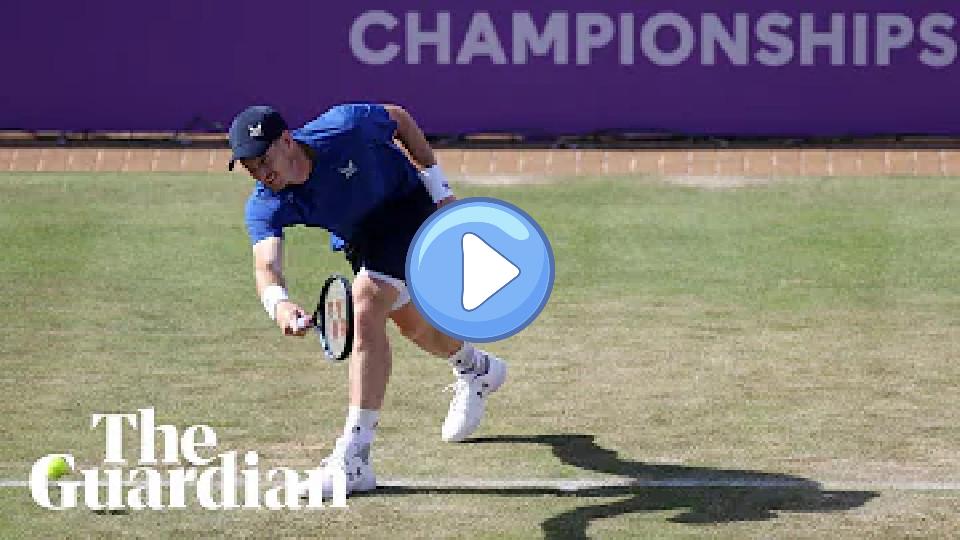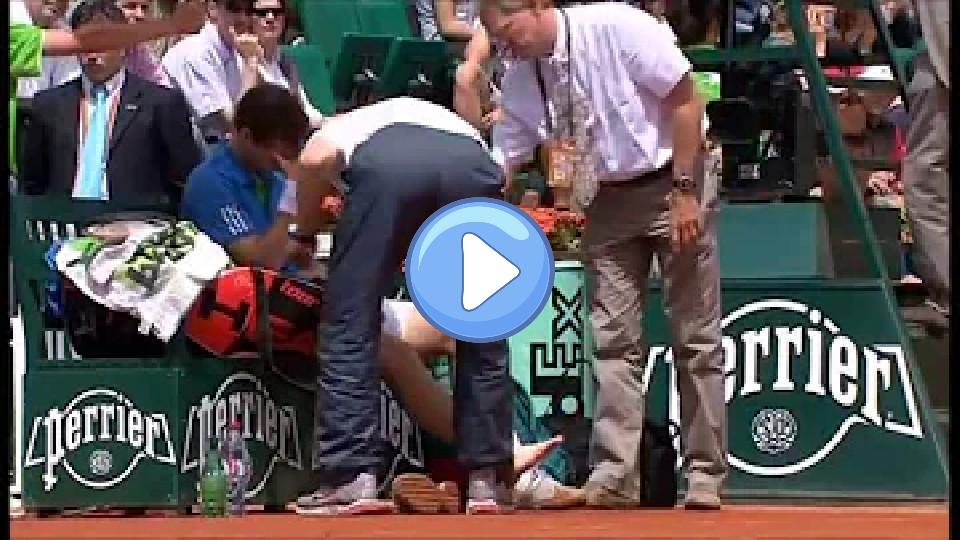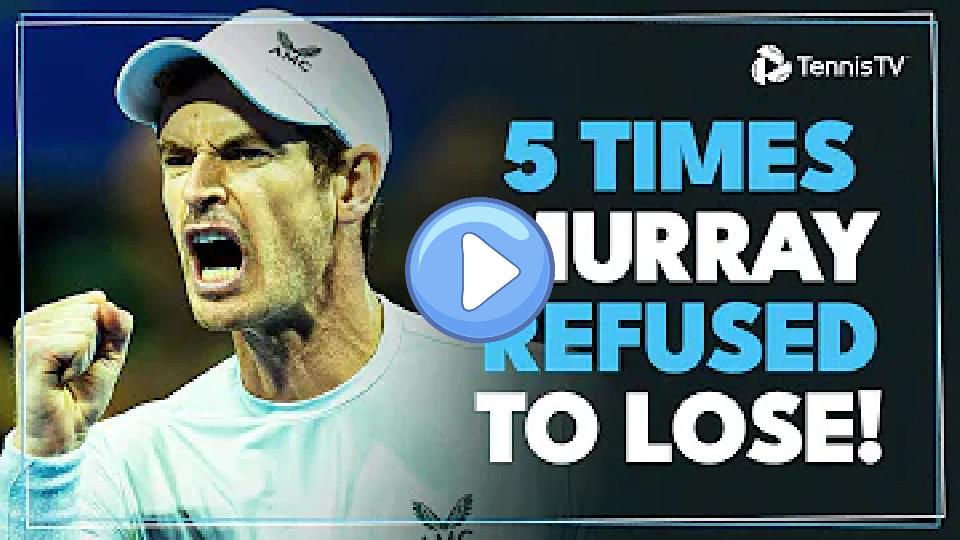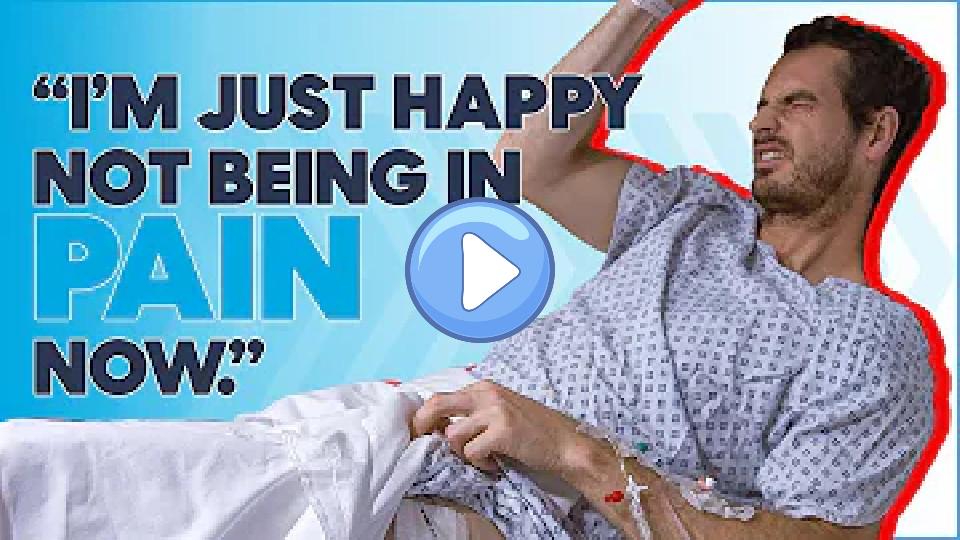Andy Murray's Sports Injuries
Type of Sport: Tennis
Andy Murray's Sports Injuries Table
| Type | Area | Date | Consequences | Content | How It Happened | Recovery Duration | Rehabilitation Details | Impact On Career | Psychological Impact | Previous Injuries | Return To Competition | Severity | Treatment | Medical Staff | Long Term Impact | Preventive Measures | Competition Missed | Initial Symptoms | Re Injury Risk | Support System | Rehabilitation Location |
|---|---|---|---|---|---|---|---|---|---|---|---|---|---|---|---|---|---|---|---|---|---|
| Back Injuries | Lower Back | 2013-04-30 | Pain and limited range of motion | Murray's back issues led to surgery in September 2013. The injury affected his ability to serve and move effectively on the court. | Developed over time due to the physical demands of tennis | Around 3 months | Underwent minor back surgery followed by physical therapy | Missed the remainder of the 2013 season, including the US Open | Frustration and anxiety about returning to top form | No significant previous back injuries reported | Returned to competition at the Brisbane International in January 2014 | Moderate | Minor back surgery | Dr. Jean-Pierre Bizzini | Ongoing management required to prevent recurrence | Strengthening and flexibility exercises for the back | Missed the US Open and subsequent tournaments in 2013 | Back pain and stiffness | Moderate | Support from coaching staff and physiotherapists | Specialized rehab centers |
| Hip Injuries | Right Hip | 2017-05-31 | Significant pain and reduced mobility | Murray struggled with his hip for years before deciding to undergo surgery. The injury severely affected his performance and ranking. | Chronic overuse and wear and tear over years of playing tennis | More than a year | Underwent hip resurfacing surgery followed by extensive physical therapy | Forced him to take a prolonged break from tennis and drop in rankings | Murray openly discussed the mental toll of the injury and the uncertainty about his future in tennis | No significant previous hip injuries reported | Returned in doubles at Queen's Club in June 2019 | Severe | Hip resurfacing surgery | Dr. Sarah Muirhead-Allwood | Possible long-term limitations in hip mobility and strength | Modified training and playing schedules to reduce stress on the hip | Missed several Grand Slams and major tournaments | Persistent pain and stiffness in the hip | Moderate, given the nature of the surgery | Strong support from family, coaching staff, and medical team | Various locations including home and specialized rehab centers |
| Sprains | Left Ankle | 2010-12-31 | Pain and swelling, limited mobility | Murray suffered an ankle sprain early in 2011, which required a short recovery period. | Rolled his ankle during a match | A few weeks | Rest, ice, compression, and elevation (RICE), followed by physical therapy | Minor impact, returned quickly to competition | Minimal, as the injury was not severe | No significant previous ankle injuries reported | Returned within a few weeks | Mild | RICE method and physical therapy | Physiotherapist | No major long-term effects reported | Ankle strengthening and balance exercises | Missed a few minor tournaments | Pain and swelling in the ankle | Low | Support from coaching and medical staff | Home and training facilities |
| Strains | Right Groin | 2009-04-30 | Pain and limited movement | Murray's groin strain in 2009 led to a short break from competition to recover. | Strained groin during a match | A few weeks | Rest and gradual return to activity | Minor, short-term break from competition | Minimal, as the injury was not severe | No significant previous groin injuries reported | Returned within a few weeks | Mild | Rest and physical therapy | Physiotherapist | No major long-term effects reported | Strengthening and flexibility exercises for the groin | Missed a few minor tournaments | Pain in the groin area | Low | Support from coaching and medical staff | Home and training facilities |
| Wrist Injuries | Right Wrist | 2007-09-30 | Pain and inability to play | Murray's wrist injury in 2007 forced him to miss the rest of the season, including the US Open and the Davis Cup. | Injury occurred during a match | Several months | Rest and physical therapy | Missed significant playing time, affecting his ranking and momentum | Disappointment and concern about long-term effects | No significant previous wrist injuries reported | Returned in early 2008 | Moderate | Rest and physical therapy | Dr. John Allen | No major long-term effects reported | Strengthening exercises for the wrist | Missed the US Open and Davis Cup in 2007 | Sharp pain in the wrist | Low to moderate | Support from family and medical team | Home and rehab centers |
Andy Murray's Sports Injuries Videos
Andy Murray Retires Due to Back Injury 😢 | Queen's 2024
Andy Murray retires after just five games played at Queens, following a brief consultation with medical staff. Jordan Thompson will take his place in the quarterfinals. Murray, a five-time champion at Queens and a three-time Grand Slam champion, receives a heartfelt reception from the crowd, acknowledging his significant achievements and impact on the sport.

Andy Murray delivers a shaky performance before retiring from Queen's due to injury.
The injury means it is unclear whether Murray will be physically ready to compete at Wimbledon for what would probably be a final attempt. There are worrying signs as he struggles physically, leading to a break of serve. Ultimately, Andy Murray retires after just five games played, raising concerns about his future participation in Wimbledon.

May 28, 2011, Andy Murray tennis
A tennis player appears to have injured his ankle during a match, causing concern among commentators. He hit a clean winner but then reacted unusually, indicating a possible injury. The player seemed to have put weight on his right side while sliding, which is a common way tennis players hurt themselves. The severity of the injury is uncertain, with some swelling visible but no significant bruising yet. Commentators discuss the treatment, including painkillers and strapping, and speculate on his ability to continue playing. The player decides to loosen the strapping, and signs of bruising are visible, but he attempts to continue without the strapping, seeking relief.

Five Times Andy Murray Refused to Lose 💪
The video celebrates Andy Murray's 37th birthday with highlights from his tennis matches. It showcases his resilience and skill, highlighting his ability to come back from the brink of defeat and win crucial points. The matches featured include intense rallies, tie-breaks, and dramatic comebacks against opponents like John Isner and Gregor Dimitrov. Murray's exceptional play and determination are emphasized, portraying him as a formidable player who remains competitive and tough in challenging situations.

Sir Andy Murray: Breaking Droughts and Fighting Back from a Horrific Hip Injury
Sir Andy Murray, a renowned tennis superstar, has an impressive career with three Grand Slam titles and two Olympic gold medals. Despite extensive hip surgery, he continues to play at a high level. In the interview, Murray discusses his early career, the pressure of winning his first Grand Slam, and his relief rather than excitement upon achieving it. He also talks about the impact of fatherhood on his perspective, his meticulous preparation for matches, and his humanitarian efforts. Murray remains motivated to see how far he can go with his current physical condition and hopes to continue competing in major tournaments.

Centre Court Stunned by Andy Murray's Underarm Serve | Wimbledon 2023
Andy Murray caused confusion on Centre Court when he chose to serve underarm against James Duckworth.

"Male player," Andy Murray corrects reporter at Wimbledon.
Andy Murray corrected a reporter at Wimbledon who forgot to include the Williams sisters by pointing out that Sam is the first male US player to reach a major semifinal since 2009.

Andy Murray's Intense Hip Surgery and Recovery | Amazon Prime Video Sport
In the Amazon Prime Documentary "Andy Murray: Resurfacing," Andy Murray reflects on his journey through his final hip surgery. He shares his anticipation and hopes for relief from pain, expressing a desire to return to tennis. Despite considering retirement, Murray remains determined, driven by the belief that he can still compete. His determination inspires those around him, creating a shared hope for a miraculous recovery. The documentary captures his resilience and the emotional support from his team as he navigates the challenges of recovery.

Andy Murray on retiring, then unretiring before major hip surgery | Andy Murray: Resurfacing
The build-up to Andy Murray's crucial hip surgery.

